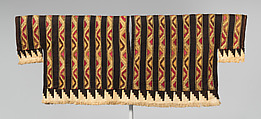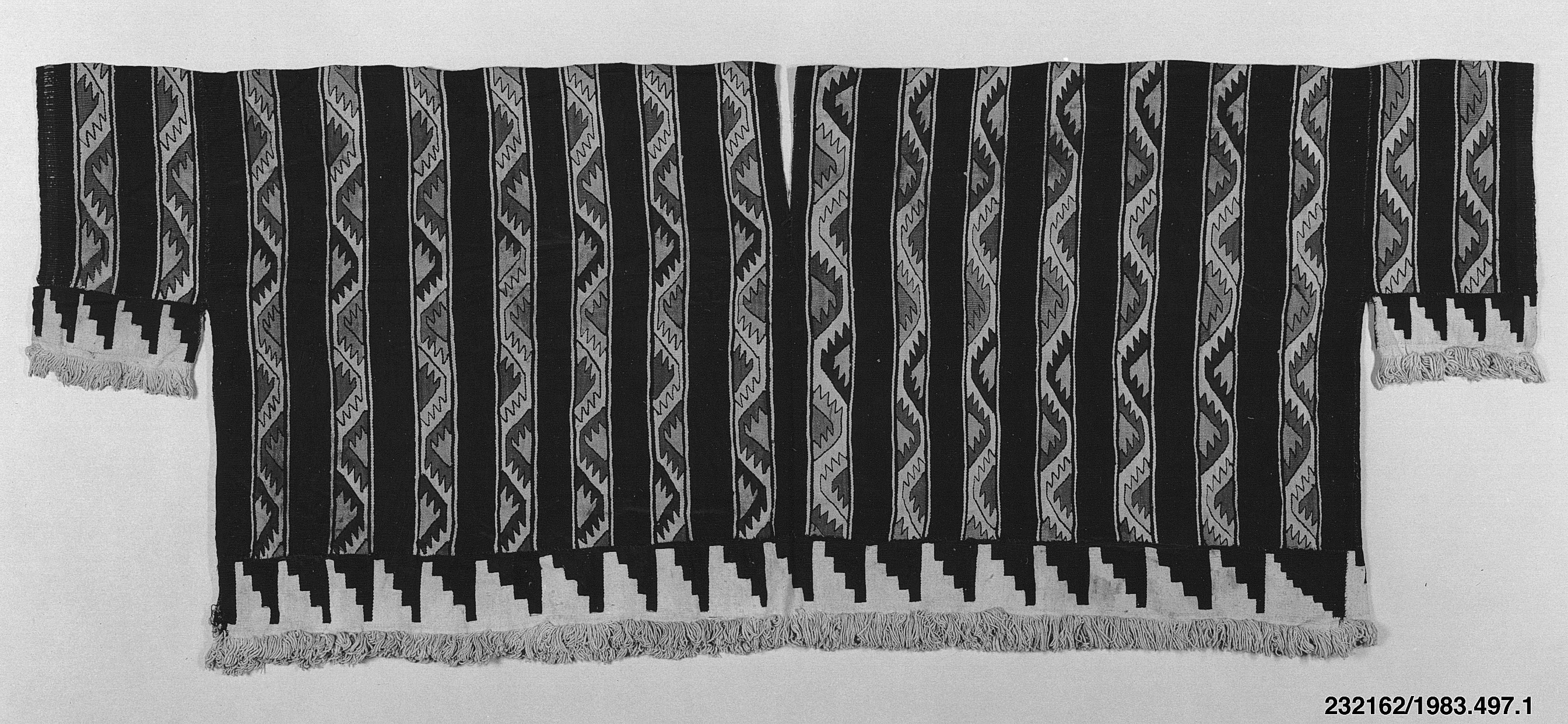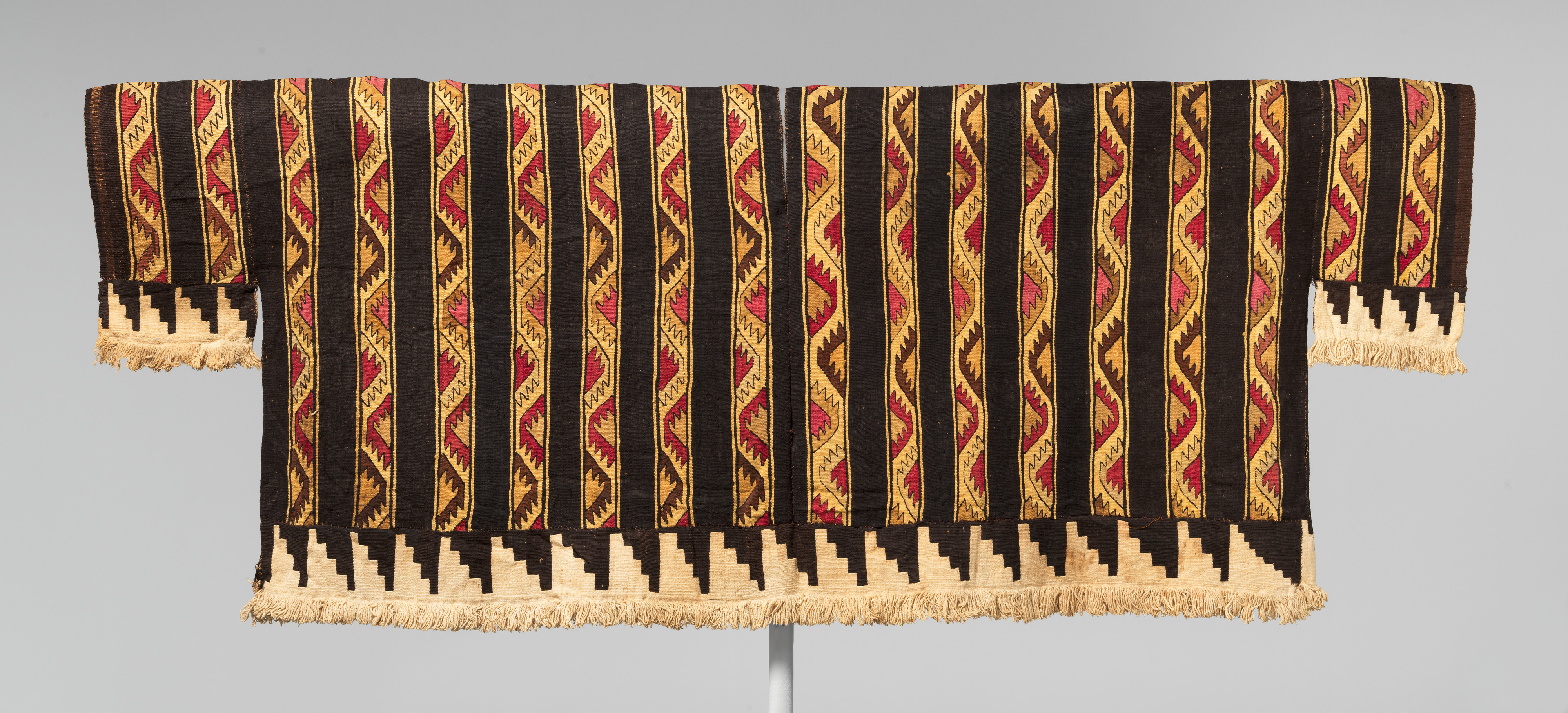Shirt
This finely woven shirt, made from camelid fibers and cotton, was created by a weaver or weavers who worked on Peru’s central coast at the time of the Inca Empire. Several garments of this type—all of wide proportions and in excellent condition—may have been made as funerary offerings: scholars have suggested that these garments were placed on the outside of mummy bundles wrapped with multiple layers of cloth. This garment was woven in two parts that were later joined by seams at the sides and top, leaving openings for the head and arms. The lower fringed band and sleeves were made separately and subsequently attached. Although the date of this tunic indicates that it was made during the period of Inca occupation of the central coast, neither the design nor the proportions are typical of the Inca state, suggesting that local traditions continued to flourish under imperial rule.
References and Further Reading
Bjerregaard, Lena, Precolumbian Textiles in the Ethnological Museum in Berlin. Lincoln, NB: Zen Books. 2017, pp. 195.
Bjerregaard, Lena. "Pre-Columbian North Coast Textiles of Peru." In Inca: Textiles and Ornaments of the Andes, edited by Serge Lemaitre, pp. 168. Brussels, Belgium: Ludion, 2018.
Dransart, Penelope. "Thoughts on Productive Knowledge in Andean Weaving with Discontinuous Warp and Weft Textiles." In Technical Practice and Power in the Andes, edited by Denise Arnold and Penelope Dransart, pp. 218-219. London, Great Britain: Archetype Publications, 2014.
Rowe, Ann Pollard. "Technical Reflections of Highland-Coastal Relationships in Late Prehispanic Tunics from Chillon and Chancay." In Textiles, Technical Practice and Power in the Andes, edited by Denise Arnold and Penelope Dransart, pp. 161, 168. London, Great Britain: Archetype Publications, 2014.
Due to rights restrictions, this image cannot be enlarged, viewed at full screen, or downloaded.
This artwork is meant to be viewed from right to left. Scroll left to view more.





